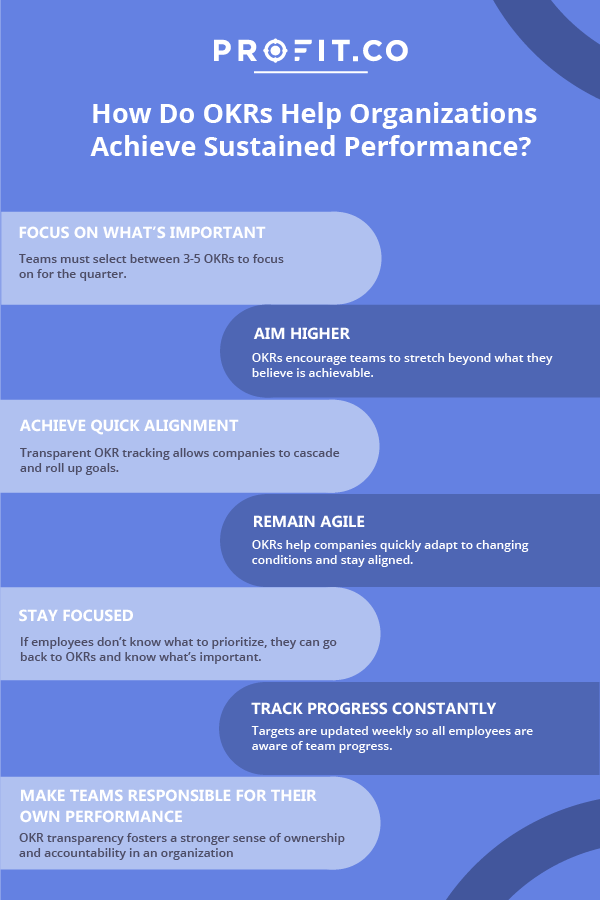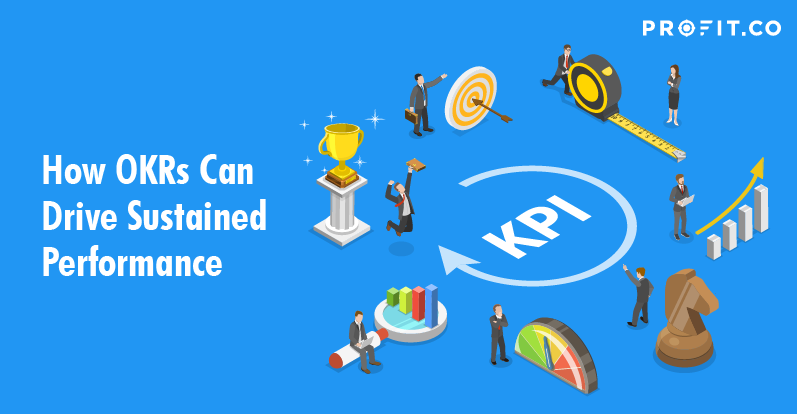Organizations operate to create their product, achieve profitability, and grow in terms of operation and scale with time. So, tracking company performance is absolutely vital for any organization that does not want to remain static. But achieving consistent performance is a challenge for organizations, especially in changing conditions.
Performance penalty due to changing conditions
For instance, after the pandemic, employees had to work from home, endure the distractions, and fight physical and mental health issues while producing the work they would otherwise have done with ease in an office environment. Such unforeseen situations could cause a massive drop in remote performance of the organization.
Corporate culture is the only sustainable competitive advantage that is completely within the control of the entrepreneur. Develop a strong corporate culture first and foremost.
At organizational level, some sectors saw a dip in demand while others saw an increase. Adapting to both situations is challenging. Companies that saw a dip in demand had to explore new avenues and create opportunities out of nowhere. Companies that had a spike in demand for their products and services needed to scale up within a short span when their entire workforce was scattered & locked in their homes. Priorities change, and there is a need to scale up or down, without losing track of what is important for the organization.
Achieving consistent performance and bringing the best out of every employee in these times of uncertainty is a monumental task. Companies finding performance in these times is detrimental to not just growth, but also for survival. So, aiming for sustained performance in all situations is inevitable.
High performance requires the best tools. For superior OKR and Performance Management, look no further than Profit.co’s enterprise software. Start your 30 day free trial today!
What is the key to sustaining high performance?

The following factors lead to sustained performance in an organization.
- Focus on what is important
- Aim higher always
- Achieve quick alignment towards the objectives across the organization
- Remain agile and quickly adapting to changing conditions
- Stay focused on priorities no matter what
- Track progress constantly and push your limits
When an organization manages to do all that, it can achieve sustained high performance. But it is easier said than done. Organizations need to have a framework that helps them implement their strategy, achieve performance, and progress towards their goals faster.
How does OKR help organizations achieve sustained performance?

OKR is the perfect tool for achieving sustained performance. OKR is a goal setting framework that enables organizations to:
1. Focus on what is important
Organizations can decide the select few things they want to excel in, and OKR helps them implement a strategy to chase those important things without any compromise. This razor-sharp focus on important things helps organizations constantly do the things that matter most and achieve sustained performance.
2. Aim higher
OKR encourages organizations to aim for what they want, and not necessarily what is certainly possible. OKRs help teams set ambitious objectives and formulate the measurable outcomes that will help them achieve those goals. Teams find ways to fully or partly overachieve desired outcomes that push the organization towards what was once deemed unachievable.
3. Achieve quick alignment
OKR helps organizations quickly align the workforce to objectives. It also ensures transparency that enables teams to quickly spot lack of alignment anywhere and realign to goals. This helps organizations to always stay on track.
4. Remain agile
OKR helps organizations quickly adapt to changing conditions. By driving alignment, OKR enables them to quickly adapt to a change and pass it on to the entire workforce. As a result, they stick to the priorities no matter what, and keep performing to optimum levels.
5. Stay Focused
Every employee faces the risk of digressing from the task in hand and prioritizing something else on any given day. OKR lets them do only the tasks that contribute to the overall objectives of the organization. This unwavering focus towards objectives leads to sustained performance.
6. Track progress constantly
OKR allows organizations to check the progress of teams towards their immediate deliverables as well as the progress towards overall objectives of the organization. OKRs are constantly updated and tangible outcomes are tracked. As a result, it keeps employees aware of their set goals, and the outcomes they need to see. This pushes them to constantly work towards outcomes that take the performance of the organization higher.
7. Make teams responsible for their own performance
OKR sets the overall objectives and enables teams to take it upon themselves to deliver the measurable key results that lead to the realization of the objectives. This motivates teams to innovate and find ways to overachieve and push the organization towards ambitious targets. It enables them to work in new ways in tandem with other teams to achieve their goals.
Why isn’t OKR a Performance management tool?
OKRs and performance management are fundamentally different means towards achieving performance. Performance management primarily assesses and reviews performance at individual level, while OKR does not assess or review performance of employees. OKR acts as a goal setting framework that helps to constantly push organizational performance by preserving focus on organizational objectives and achieving them through short-term team goals.
Performance management includes assessment of personal goals and development at individual level. For instance, during a performance review, it is a standard practice to assess how the individual has developed himself/herself through training programs in order to deliver performance and achieve growth at personal level.
Due to this fundamental difference in approach, personal goals should not be mixed with OKRs.
OKRs in performance review
Since OKR focuses on outcomes produced by teams and does not review individual performance, it is not advisable to make the fulfilment of OKR at individual level as a parameter to assess the performance of an employee during performance reviews. It is also the reason for disconnecting OKR from determining pay, incentives, and benefits for an employee; outcomes are produced by teams and individuals cannot be compensated based on team’s achievement of key results.
But an individual’s qualitative contribution to organization objectives can be appreciated and can be added as a point of assessment in performance review. For instance, if the employee contributed to the team by finding a shortcut towards reaching goals or added value through an innovation, it can be a part of the performance review.
OKR is an open system where progress towards goals and objectives is visible for everyone to see. Whenever there is lack of progress or difficulty in achieving goals, it can be easily identified by the managers. The obstacles that hinder or stop the teams from achieving key results can be identified, and the managers can discuss with the team members with regard to the skills that need to be improved or newly learnt to deliver a sustained performance.
To learn how you could use Profit.co to set ambitious goals and achieve them while fostering a high performance culture, book a free demo with our OKR experts.
Ready to start your OKR Journey for FREE?

